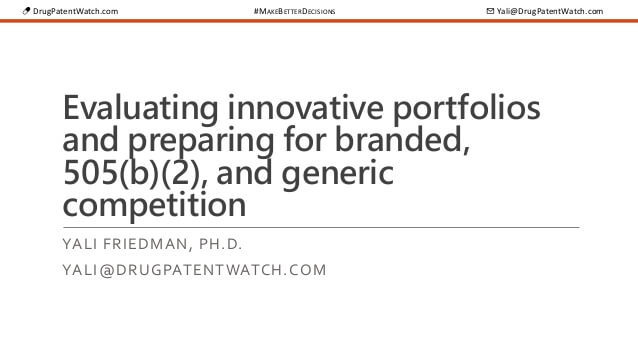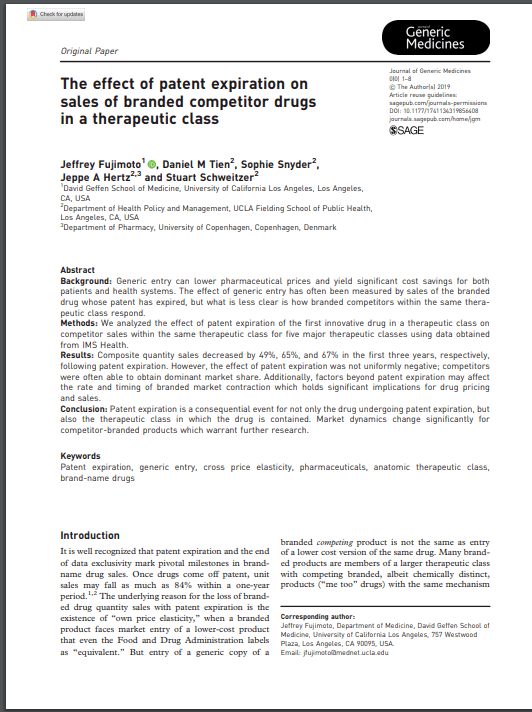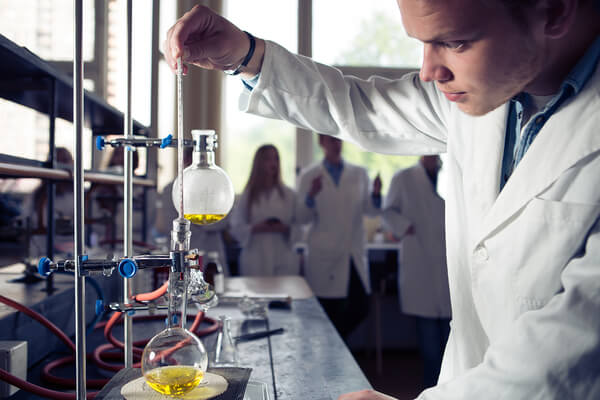Is Patent “Evergreening” Restricting Access to Medicine/Device Combination Products?
Patent evergreening has emerged as a contentious issue in the pharmaceutical industry, particularly affecting medicine/device combination products. This practice allows manufacturers to extend market exclusivity beyond the original patent term, potentially delaying patient access to more affordable alternatives. Research indicates that device patents frequently outlast medicine patents, creating additional years of market protection with debatable therapeutic benefits. This comprehensive analysis examines how evergreening affects combination products, its economic impact on healthcare systems, and potential policy solutions to balance innovation with accessibility.
Understanding Patent Evergreening in the Pharmaceutical Industry
Patent evergreening refers to the strategic practice of extending market exclusivity for pharmaceutical products beyond their original patent terms. While patents are designed to reward innovation with temporary monopolies, evergreening has evolved into what critics describe as an anti-competitive tactic that prioritizes profits over patient access.
Definition and Mechanisms of Patent Evergreening
Evergreening occurs when pharmaceutical companies file additional patents related to an existing drug to extend market exclusivity without necessarily providing proportionate therapeutic improvements. These secondary patents often cover minor modifications to the original product, such as new delivery devices, slightly altered formulations, or manufacturing processes. According to a comprehensive study, “Patent evergreening is the strategy of getting multiple patents that cover different parts of the same product,” allowing companies to maintain monopolies long after the original compound patent expires4.
The practice is particularly prevalent in medicine/device combination products, where patents on the delivery device can effectively extend exclusivity even after patents on the active pharmaceutical ingredients have expired. This creates a system where companies can leverage device innovation to maintain market control, sometimes for decades beyond the original patent period.
Historical Development of Evergreening Practices
Evergreening has evolved over decades as pharmaceutical companies have become increasingly sophisticated in navigating patent systems. Initially, drug patents primarily covered active ingredients, but the scope has expanded to include formulations, manufacturing processes, and delivery devices. This evolution has coincided with increasing pressure on pharmaceutical companies to maintain revenue streams as blockbuster drugs face patent expiration.
The practice has grown so prevalent that it has attracted attention from health policy experts, lawmakers, and regulatory bodies. As one research paper notes, “Evergreening of pharmaceutical patents has emerged as a serious challenge for access to affordable drugs as it aims to delay the generic competition by extending the length of the exclusivity period beyond the legitimate patent term without any considerable improvement in therapeutic benefits”5. This historical progression demonstrates how patent strategies have shifted from primarily protecting genuine innovation to increasingly focusing on extending market control.
The Intersection of Patents and Medicine/Device Combinations
The unique nature of medicine/device combination products creates particularly fertile ground for evergreening strategies, presenting both opportunities for manufacturers and challenges for healthcare systems.
How Combination Products Create Unique Patent Opportunities
Medicine/device combinations present multiple components that can be patented independently, including the active pharmaceutical ingredient, formulation, and delivery device. Each component may be governed by different patents with varying expiration dates. This complexity creates a patent thicket that potential competitors must navigate to bring alternative products to market.
For manufacturers, this presents strategic opportunities to extend market exclusivity by patenting improvements to the delivery device even as patents on the medicine itself expire. Research has found that “device patents exist for 90 percent of the 49 medicine/device product combinations studied, and were the only sort of unexpired patent for 14 products”3. This demonstrates how prevalent device patenting has become as a strategy for extending product lifecycles.
Device Patents as Extensions of Drug Exclusivity
Device patents have become particularly valuable for pharmaceutical companies seeking to maintain market exclusivity. A study published in scholarly journals found that when comparing “the last-to-expire device patent to that of the last-to-expire active ingredient patent, the median additional years of patent protection afforded by device patents was 4.7 years (range: 1.3–15.2 years)”3. This represents a significant extension of market exclusivity that delays the entry of competitive products.
The impact of this extension varies by therapeutic area but is particularly significant in conditions requiring specialized delivery devices, such as respiratory diseases, diabetes, and severe allergies. These conditions often rely on inhalers, auto-injectors, or other proprietary delivery systems that can be continuously modified and re-patented, creating barriers to generic entry even after the medicine patent expires.
Evidence of Evergreening in Medicine/Device Combinations
Research provides compelling evidence that evergreening through device patents is widespread across multiple therapeutic areas, with particularly strong examples in respiratory, diabetes, and allergy treatments.
Case Study: Respiratory Inhalers (Asthma and COPD Products)
Respiratory inhalers for asthma and chronic obstructive pulmonary disease (COPD) represent a classic example of device patent evergreening. The transition from chlorofluorocarbon (CFC) propellants to hydrofluoroalkane (HFA) propellants provided an opportunity for manufacturers to obtain new patents, even though many of the active ingredients had been off-patent for years.
A striking example is Combivent Respimat®, which combines albuterol and ipratropium—compounds originally patented in 1972 and 1970, respectively. Despite these active ingredients being post-patent for over 25 years, the product remains protected through device patents:
“Today these active ingredients are attached to an inhaler that, while appearing a simple device, bears 17 patents with expiration dates ranging from 2014 to 2028. Boehringer, which held the original compound patent on ipratropium granted in 1970, has therefore had patent protection in one form of another on this medicine for 58 years and counting (from 1970–2028).”3
This case illustrates how device patents can dramatically extend market exclusivity—in this instance, potentially tripling the protection period beyond the standard 20-year patent term for the original compounds.
Case Study: Diabetes Treatment Devices
Diabetes management products provide another clear example of evergreening through device patents. Insulin delivery systems, including pens, pumps, and continuous glucose monitoring systems, have been subject to extensive patenting despite insulin itself being discovered nearly a century ago.
Device patents for insulin delivery systems often cover incremental changes to injector designs, dosing mechanisms, or digital interfaces. These modifications may offer convenience benefits but rarely represent transformative improvements in therapeutic outcomes. Nevertheless, they effectively extend market exclusivity and maintain premium pricing, contributing to the well-documented affordability crisis for diabetes patients.
Research into device patents for diabetes products reveals that “55 percent of the 235 patents found by our study were device patents”3. This prevalence underscores how central device patenting has become to lifecycle management strategies in diabetes care, potentially limiting access to affordable treatment options.
Case Study: Allergy Treatment Devices
Severe allergy treatments, particularly epinephrine auto-injectors, demonstrate similar patterns of device patent evergreening. Although epinephrine has been used medically for over a century, auto-injector devices for emergency treatment of anaphylaxis remain protected by multiple patents covering various aspects of the delivery mechanism.
These patents effectively prevent generic competitors from producing similar auto-injectors even though the medicine itself is off-patent. The result has been limited competition and sustained high prices for products that serve a critical life-saving function, raising serious public health concerns.
Economic Impact of Evergreening Practices
The economic consequences of evergreening extend beyond pharmaceutical company profits, affecting healthcare systems, insurers, and ultimately patients who may struggle to access affordable treatments.
Cost Implications for Healthcare Systems
The financial impact of evergreening on healthcare systems is substantial. According to research from the Health Savers Initiative, addressing evergreening through new FDA exclusivity rules could “reduce federal deficits by at least $10 billion” over a decade (2021-2030)2. This includes potential savings of “$7 billion in drug costs” for Medicare Part D and “$4 billion in lower premiums and cost sharing” for Medicare beneficiaries2.
These figures highlight the significant strain that extended monopolies place on public health insurance programs. Private insurers and government payers alike bear the burden of paying monopoly prices for combination products that could otherwise face competition from lower-cost alternatives. The cumulative effect contributes to the overall growth in prescription drug spending that has become a major driver of healthcare cost inflation.
Effects on Patient Access and Affordability
For patients, the consequences of evergreening are often direct and personal, manifesting as high out-of-pocket costs or restricted access to needed medications. When generic competition is delayed, patients continue to pay premium prices for branded products, potentially leading to medication rationing or abandonment.
The National Academies of Science, Engineering & Medicine report cited in the search results confirms that “spending on prescription drugs has been rising dramatically, to the point that many individuals have difficulty paying for the drugs that they or their family members need”1. This rising cost burden disproportionately affects vulnerable populations, including elderly patients on fixed incomes and those with chronic conditions requiring ongoing medication use.
In countries with limited public healthcare coverage, the impact can be even more severe. As noted regarding Thailand, “Many medicines will become too expensive for patients in Thailand in the near future if the government allows manufacturers to extend patents under the so-called ‘evergreen system'”6. This global dimension highlights how evergreening practices can threaten access to essential medicines in both developed and developing economies.
Legal Framework Surrounding Evergreening
The legal structures that enable and potentially constrain evergreening practices vary across jurisdictions, creating a complex global landscape for pharmaceutical patent strategies.
Current Patent Laws and Evergreening
In most countries, patent laws do not explicitly prohibit evergreening, allowing companies to obtain multiple patents on different aspects of the same product if each patent meets the standard requirements of novelty, non-obviousness, and utility. This legal framework enables the layering of patents that can effectively extend market exclusivity.
The United States patent system, for example, allows for patents on new uses, formulations, and delivery devices for existing medicines. The FDA’s regulatory framework further supports this through various exclusivity provisions that can delay generic competition. While these provisions were intended to incentivize innovation, they have increasingly been utilized as strategic tools to maintain market control.
International Variations in Addressing Evergreening
Countries vary significantly in how they address pharmaceutical evergreening. India has taken a particularly strong stance, implementing specific anti-evergreening provisions in its patent law. Section 3(d) of the Indian Patents Act restricts patents on new forms of known substances unless they demonstrate significantly enhanced efficacy, directly targeting evergreening practices.
This contrasts with the approach in many developed countries, where patent offices may apply standard patentability criteria without special provisions for pharmaceutical evergreening. These international differences create a complex global landscape for pharmaceutical companies and can lead to situations where a product maintains patent protection in some markets while facing generic competition in others.
Stakeholder Perspectives on Evergreening
The debate over evergreening involves multiple stakeholders with often conflicting interests and perspectives, from pharmaceutical innovators to patient advocates.
Pharmaceutical Industry Defense of Patent Extensions
The pharmaceutical industry generally defends patenting practices around medicine/device combinations as legitimate protection for ongoing innovation. Industry representatives argue that improvements to delivery devices—even incremental ones—require substantial research and development investment and provide meaningful benefits to patients in terms of ease of use, adherence, or reduced side effects.
Companies also contend that extended patent protection is necessary to recoup development costs and fund future innovation. Without adequate protection for their investments, they argue, the pipeline of new medicines and delivery technologies would diminish, ultimately harming patients.
Generic Manufacturers’ Challenges
Generic manufacturers and biosimilar developers view evergreening quite differently, characterizing it as an anti-competitive practice that prevents legitimate competition after the original innovation has been fairly rewarded. As noted by the Association for Accessible Medicines, these practices “run counter to Congress’s stated goal of bringing lower cost generic alternatives to market at the earliest possible date”1.
Generic manufacturers face significant challenges when attempting to create alternative versions of combination products. Even when active ingredient patents expire, device patents can block market entry or force generic companies to develop entirely different delivery systems, increasing costs and potentially limiting substitutability. This undermines the basic premise of generic competition as a mechanism for reducing drug prices after the innovator’s exclusivity period.
Patient Advocacy Positions
Patient advocacy groups generally emphasize the importance of balancing innovation incentives with affordable access. While acknowledging the value of improved delivery devices, these organizations question whether the extended exclusivity periods granted through device patents are proportionate to the incremental benefits provided.
Many advocacy groups support policy reforms to limit evergreening, arguing that patients should not face financial barriers to accessing medications after the primary innovation has been fairly rewarded through the original patent term. Their perspective emphasizes that the ultimate purpose of the patent system should be to promote public welfare, not merely to maximize returns for patent holders.
Balancing Innovation and Access
A central challenge in addressing evergreening is maintaining incentives for meaningful innovation while preventing strategies that extend exclusivity without proportionate public benefit.
The Innovation Argument for Patent Protection
Patents serve an important function in the pharmaceutical ecosystem by providing exclusivity periods that allow innovators to recoup research and development investments. Without patent protection, companies would have diminished incentives to invest in the costly, high-risk process of developing new medicines and delivery technologies.
For medicine/device combinations, patents on delivery devices can encourage innovations that improve patient experience, adherence, and outcomes. Some device improvements do offer meaningful benefits, “for example new MDIs that improve particle deposition, which may allow for a smaller amount of a medicine to be administered”3. Recognizing and rewarding such innovations remains important for advancing patient care.
The Public Health Case for Limiting Evergreening
The counterargument focuses on distinguishing between meaningful innovation and strategic patenting designed primarily to extend market exclusivity. When device patents extend monopoly periods without proportionate therapeutic benefits, they may conflict with the fundamental purpose of the patent system to promote progress in useful arts for public benefit.
From a public health perspective, delayed generic competition means sustained high prices that can restrict access to essential medications. As noted in research, “Abusing the patent and regulatory systems to prolong a brand drug’s monopoly— a practice commonly referred to as ‘evergreening’— is increasingly being used as a tactic to delay patient access to more affordable, FDA-approved generic and biosimilar medicines”1. This raises legitimate concerns about whether current patenting practices are serving their intended social purpose.
Policy Solutions and Regulatory Responses
Various approaches have been proposed to address evergreening while preserving appropriate incentives for innovation, ranging from regulatory reforms to legislative interventions.
FDA Regulatory Approaches
Regulatory agencies like the FDA could implement policies that limit the ability of device patents to delay generic competition for combination products. One approach examined by the Health Savers Initiative involves “new FDA exclusivity rules” that could prevent evergreening delays of generic drug competition2.
Such rules might include more stringent criteria for granting additional exclusivity periods for modified versions of existing products, requiring demonstration of significant clinical improvements rather than merely patentable differences. The FDA could also enhance regulatory pathways for generic and biosimilar competitors seeking to bring alternative versions of combination products to market.
Legislative Reform Proposals
Legislative solutions could address evergreening more directly by modifying patent laws or creating specific provisions for pharmaceutical products. These might include limitations on secondary patents for drugs, heightened standards for non-obviousness in pharmaceutical patents, or provisions explicitly addressing evergreening practices.
The National Academies’ study recommended “preventing the common industry practices that delay entry of generics into the market and extend market exclusivity of branded products”1. Implementing such recommendations would likely require coordinated legislative action to reform both patent law and regulatory frameworks governing pharmaceutical products.
International Trade Considerations
Any policy response must navigate the complex landscape of international trade agreements, which often include provisions regarding intellectual property protection for pharmaceuticals. Countries seeking to limit evergreening may face challenges under agreements like the Trade-Related Aspects of Intellectual Property Rights (TRIPS) or bilateral trade agreements with strong pharmaceutical patent protections.
Finding the right balance requires careful consideration of how patent reforms interact with international obligations while still addressing legitimate public health concerns. The experience of countries like India that have implemented anti-evergreening provisions offers valuable lessons for other nations considering similar approaches.
Future Trends in Medicine/Device Patent Protection
The landscape of medicine/device combination patents continues to evolve with technological advances and shifting regulatory environments, presenting both challenges and opportunities for addressing evergreening.
Emerging Technologies and Patent Implications
As healthcare increasingly embraces digital technologies, the patent landscape for medicine/device combinations is growing more complex. Smart inhalers with connectivity features, closed-loop insulin delivery systems, and medication adherence technologies all present new opportunities for patent protection beyond the traditional device components.
This technological evolution may exacerbate evergreening concerns if digital features become the next frontier for extending exclusivity. As noted in research, “Given the number of parts on any device, there are multiple independent components to improve and update continuously, opening the door to incremental patenting that presents opportunities for evergreening by layering device patents upon device patents”3. The integration of software, sensors, and connectivity features multiplies these opportunities further.
Potential Evolution of Patent Law
Patent law may continue to evolve in response to concerns about evergreening, potentially establishing clearer boundaries between patentable innovation and strategic lifecycle management. Future reforms might include more specific criteria for patentability of pharmaceutical improvements or special provisions for combination products.
Heightened transparency requirements could also play a role, making patent strategies more visible to regulators, competitors, and the public. Some have suggested that the FDA should introduce “a companion or appendix to the Orange Book which records patents for broader categories of devices that are specifically approved for use with certain medicines”3, improving visibility into the full patent landscape for combination products.
Key Takeaways
- Evergreening is widespread in medicine/device combinations: Research shows that 90% of studied combination products had unexpired device patents, with these patents extending market exclusivity by a median of 4.7 years beyond active ingredient patents3.
- Significant economic impact: Addressing evergreening could reduce federal deficits by at least $10 billion over a decade and save Medicare beneficiaries $4 billion in lower premiums and cost sharing2.
- Questionable therapeutic benefit: Many device patents extend exclusivity without proportionate therapeutic improvements, raising questions about whether they primarily serve innovation or market protection.
- Global access implications: Evergreening practices affect medication access worldwide, with particularly severe consequences in countries with limited healthcare resources6.
- Balancing incentives remains crucial: Policy solutions must distinguish between meaningful innovation deserving protection and strategic patenting that primarily delays competition without proportionate public benefit.
Frequently Asked Questions
What exactly is patent evergreening in the pharmaceutical context?
Patent evergreening is the strategy of obtaining multiple patents covering different aspects of the same pharmaceutical product to extend market exclusivity beyond the original patent term. In medicine/device combinations, this often involves patenting improvements to delivery devices after the active ingredient patents expire, effectively prolonging market monopoly without necessarily providing proportionate therapeutic benefits4.
How much additional protection do device patents typically provide?
Research has found that device patents extend market exclusivity for medicine/device combinations by a median of 4.7 years beyond the expiration of active ingredient patents, with the range extending from 1.3 to 15.2 years of additional protection3. This represents a significant extension beyond the standard 20-year patent term.
Do device improvements always provide meaningful benefits to patients?
While some device improvements offer genuine therapeutic advantages, many provide only marginal benefits that may not justify extended market exclusivity. The distinction between meaningful innovation and strategic patenting is often subjective, making it challenging to establish clear regulatory boundaries. Research suggests that many patented device modifications do not significantly improve the standard of care despite extending market exclusivity3.
What policy approaches might address evergreening concerns while preserving innovation incentives?
Potential approaches include: reforming FDA exclusivity rules to require demonstrable therapeutic improvements for extended protection; enhancing transparency in patent listings for combination products; strengthening regulatory pathways for generic and biosimilar competition; and potentially modifying patent laws to address pharmaceutical-specific concerns while remaining compliant with international obligations123.
How does evergreening affect healthcare costs and patient access globally?
Evergreening maintains monopoly pricing beyond original patent terms, increasing costs for healthcare systems and patients. In the U.S., addressing evergreening could save Medicare Part D $7 billion and beneficiaries $4 billion over a decade2. Globally, the impact may be even more severe in countries with limited healthcare resources, potentially making essential medicines unaffordable for patients6. These economic consequences translate directly to reduced medication access, particularly for vulnerable populations.
Citations:
- https://accessiblemeds.org/resources/blog/anti-competitive-evergreening-delays-patient-access-more-affordable-generics/
- https://www.crfb.org/papers/limiting-evergreening-name-brand-prescription-drugs
- https://www.proquest.com/scholarly-journals/is-patent-evergreening-restricting-access/docview/1950591342/se-2
- https://photonlegal.com/an-overview-of-evergreening-patents/
- https://papers.ssrn.com/sol3/papers.cfm?abstract_id=4524966
- https://www.gabionline.net/policies-legislation/Evergreening-patents-may-make-drugs-too-costly-for-patients-in-Thailand
- https://kenfoxlaw.com/evergreening-strategy-extending-patent-protection-innovation-or-obstruction
- https://worldofdtcmarketing.com/the-truth-behind-patent-evergreening-in-pharma-industry/
- https://pmc.ncbi.nlm.nih.gov/articles/PMC9764446/
- https://www.nature.com/articles/s41587-021-01137-6
- https://www.intereconomics.eu/contents/year/2015/number/4/article/intellectual-property-rights-and-the-evergreening-of-pharmaceuticals.html
- https://www.pharmacy.utoronto.ca/events/patent-evergreening-drug-device-combination-products-phenomenon-us-and-abroad
- https://pmc.ncbi.nlm.nih.gov/articles/PMC11377641/
- https://www.arnoldventures.org/stories/evergreening-stunts-competition-costs-consumers-and-taxpayers
- https://www.youtube.com/watch?v=G9CGZFFI1ww
- https://sites.uclawsf.edu/evergreensearch/
- https://journals.plos.org/plosone/article/figures?id=10.1371%2Fjournal.pone.0148939
- https://pmc.ncbi.nlm.nih.gov/articles/PMC3680578/
- https://www.citizen.org/article/using-the-inflation-reduction-act-to-rein-in-patenting-evergreening-abuses/
- https://www.uclawsf.edu/2020/09/24/patent-drug-database/






















